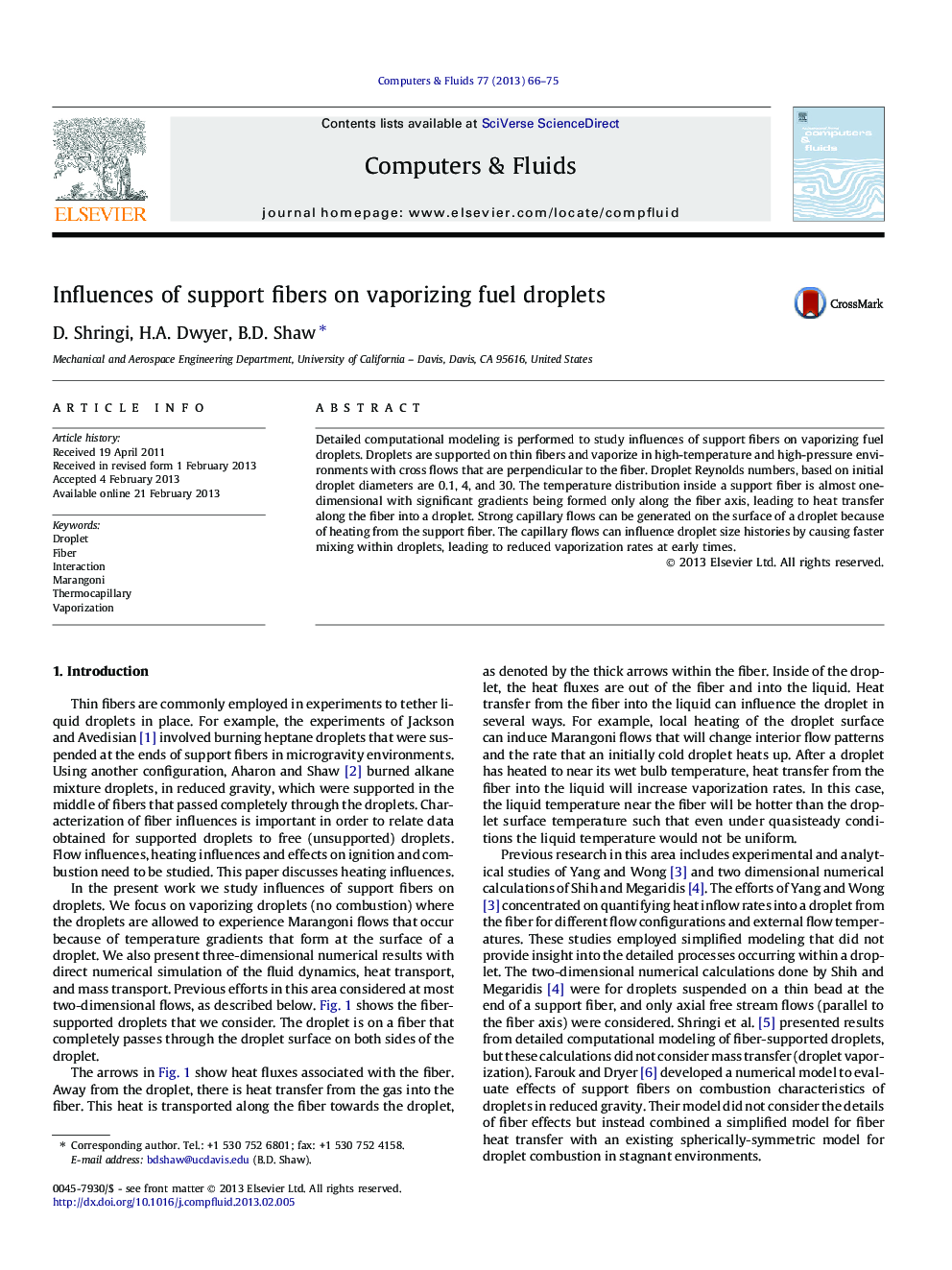| Article ID | Journal | Published Year | Pages | File Type |
|---|---|---|---|---|
| 756670 | Computers & Fluids | 2013 | 10 Pages |
Detailed computational modeling is performed to study influences of support fibers on vaporizing fuel droplets. Droplets are supported on thin fibers and vaporize in high-temperature and high-pressure environments with cross flows that are perpendicular to the fiber. Droplet Reynolds numbers, based on initial droplet diameters are 0.1, 4, and 30. The temperature distribution inside a support fiber is almost one-dimensional with significant gradients being formed only along the fiber axis, leading to heat transfer along the fiber into a droplet. Strong capillary flows can be generated on the surface of a droplet because of heating from the support fiber. The capillary flows can influence droplet size histories by causing faster mixing within droplets, leading to reduced vaporization rates at early times.
► Fiber conduction heat transfer is nearly one-dimensional along the fiber axis. ► Fiber heat transfer into a droplet can be significant. ► Strong thermocapillary flows can be generated on the surface of a droplet. ► Thermocapillary flows can influence droplet size histories.
